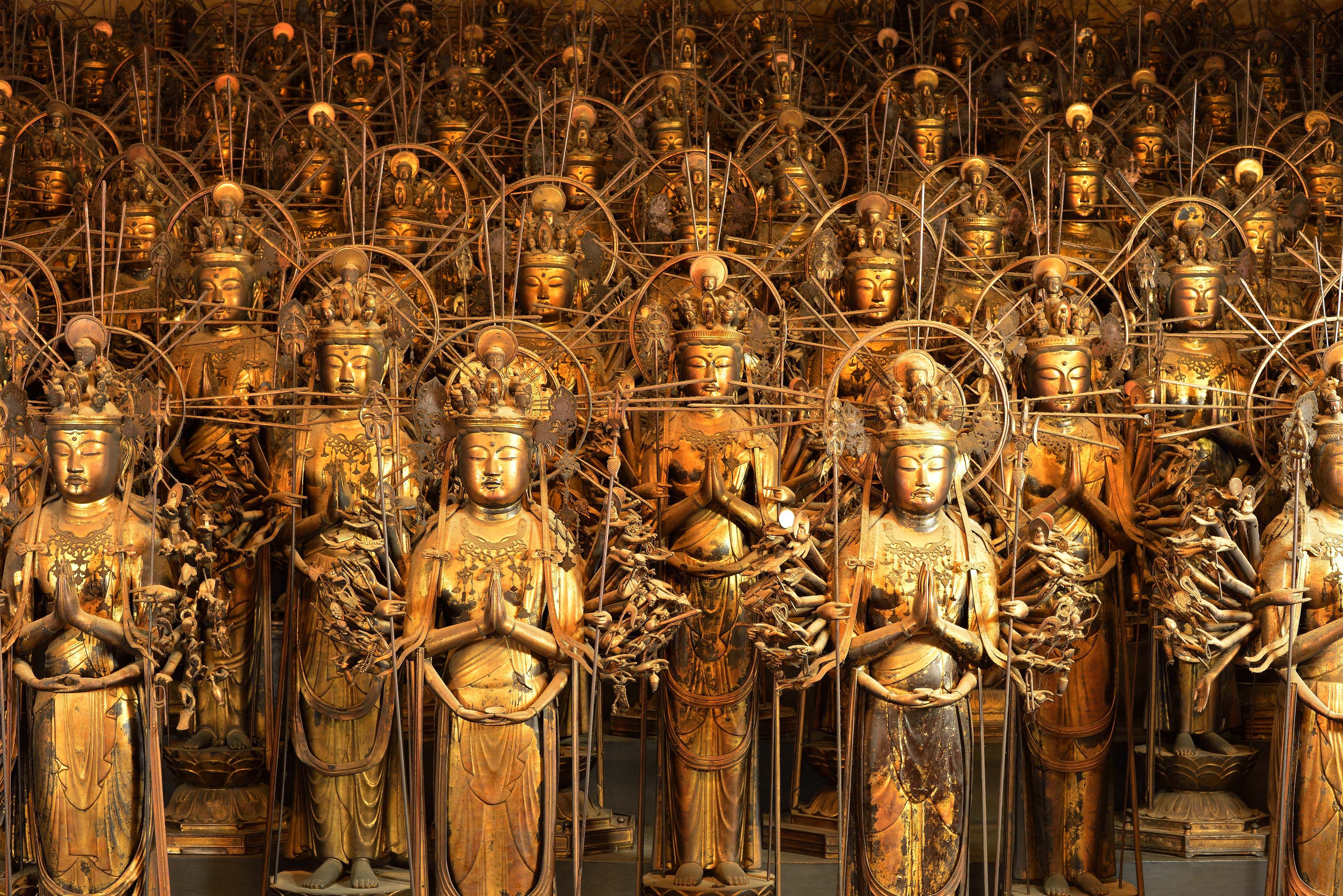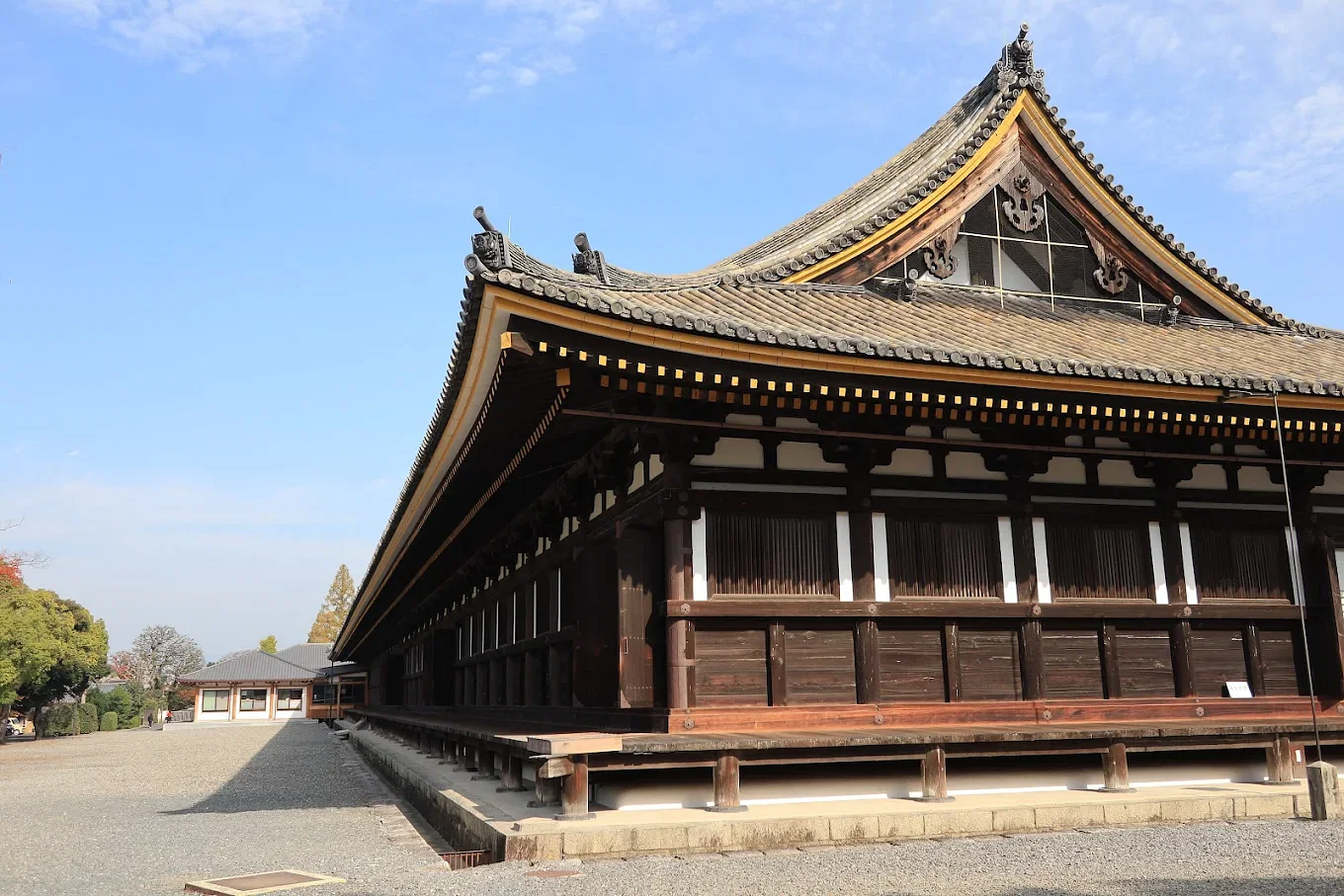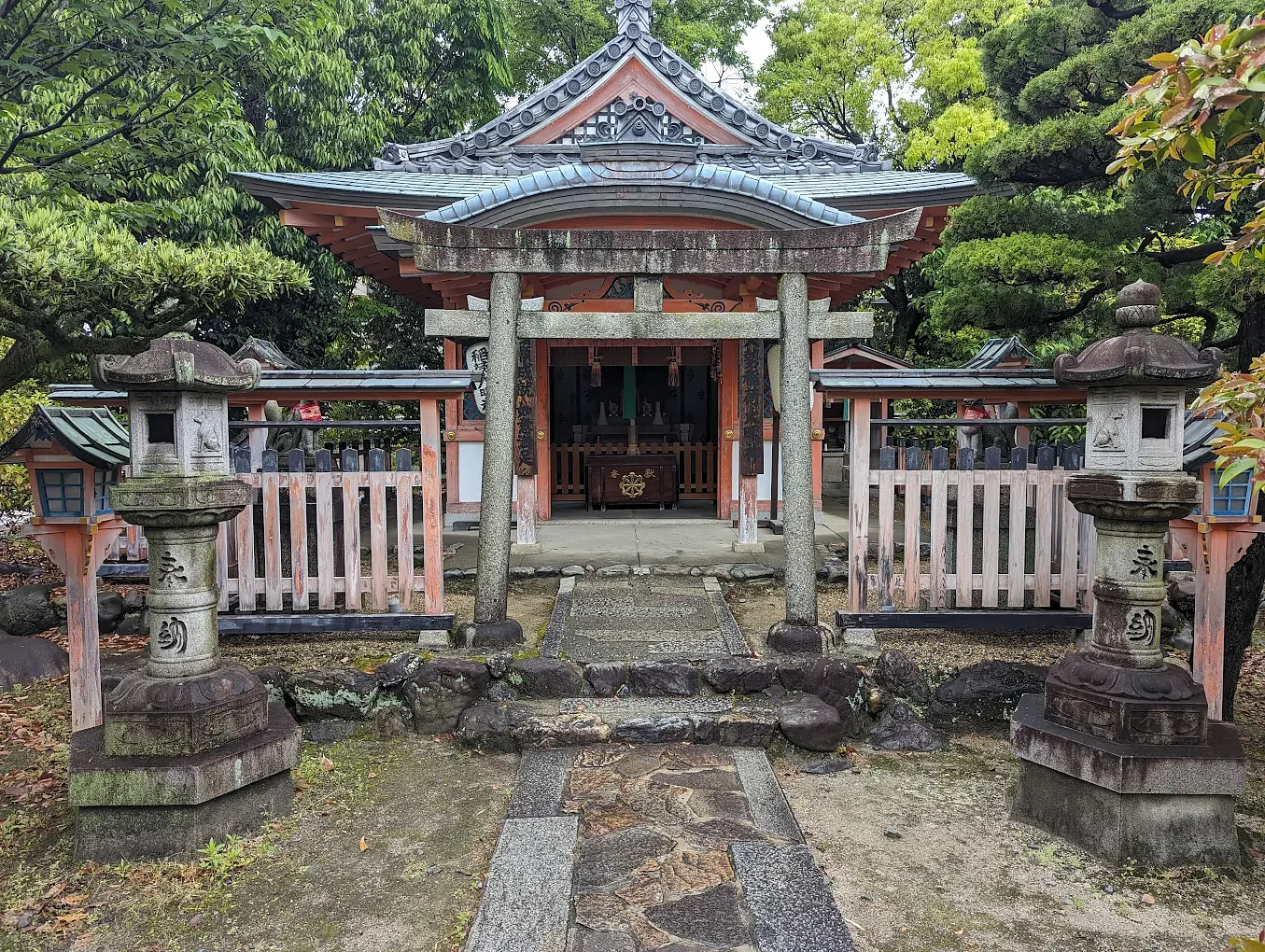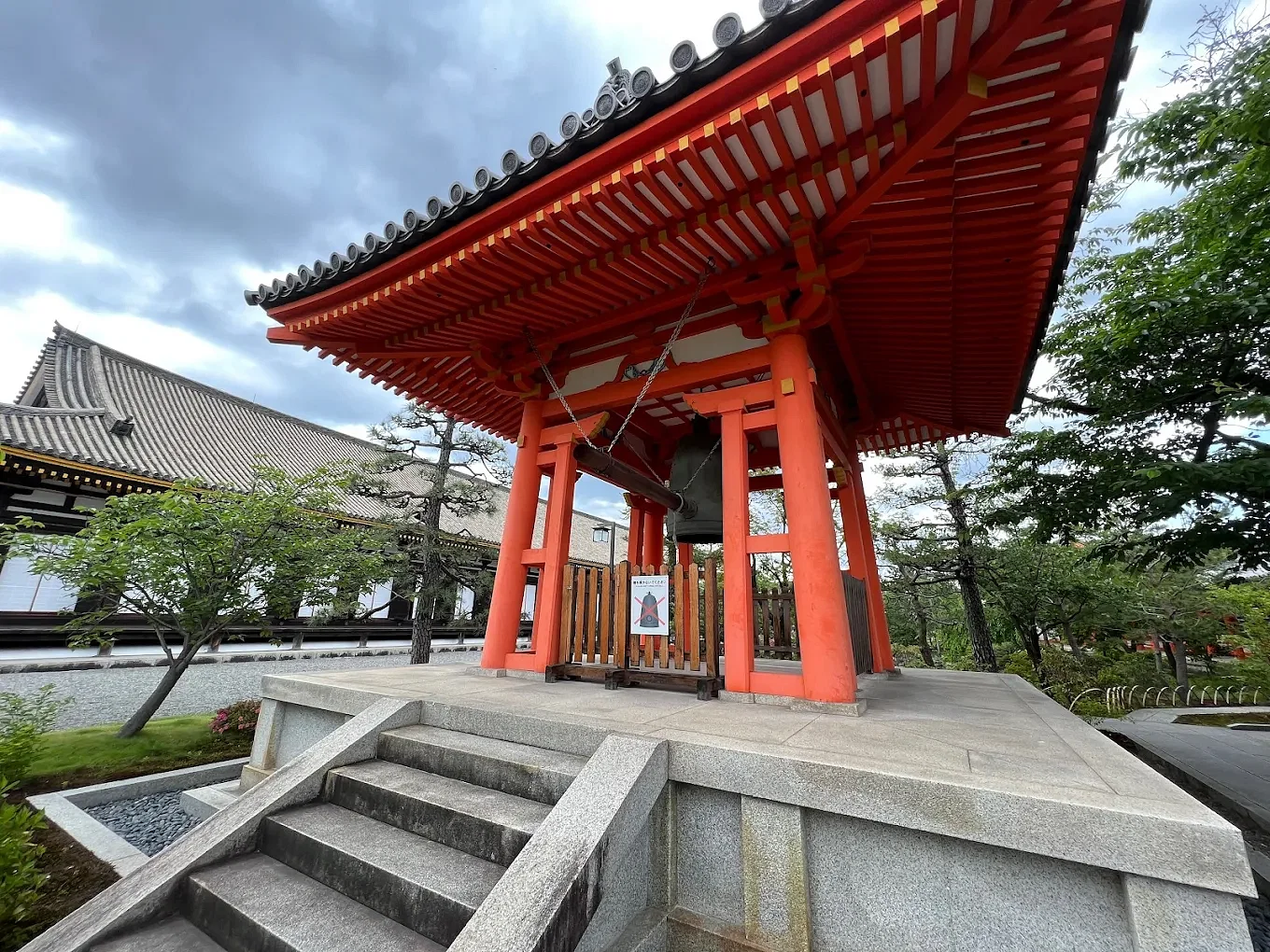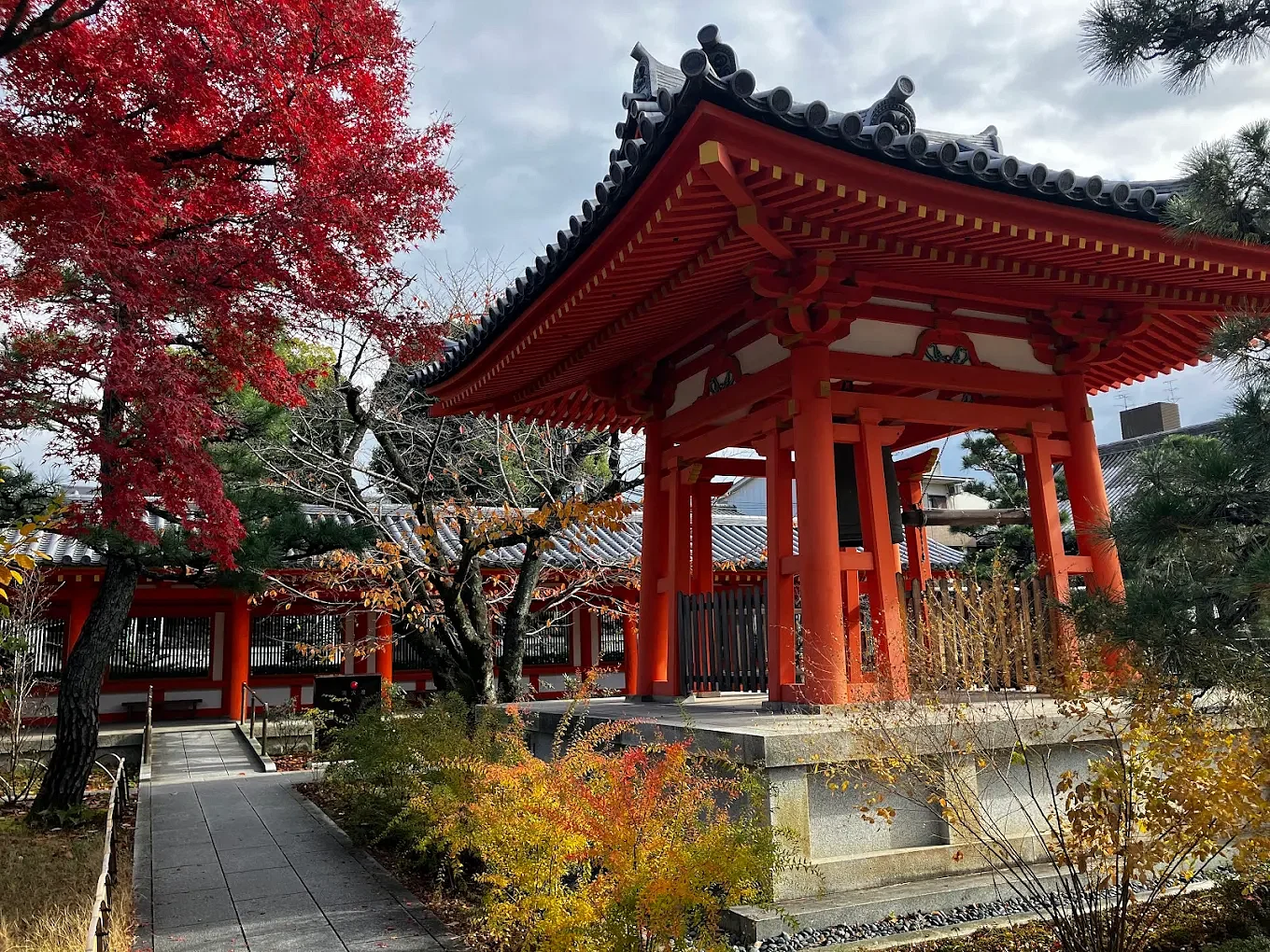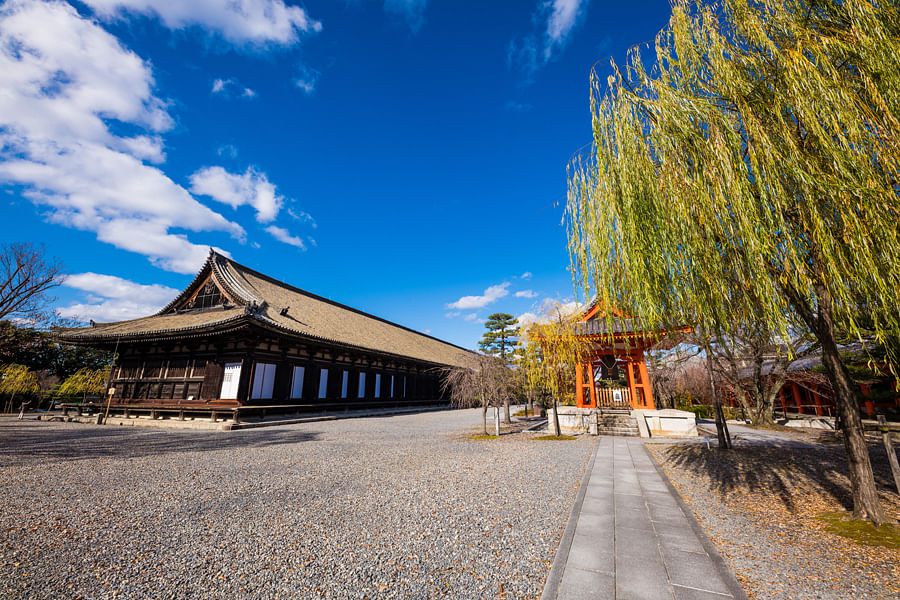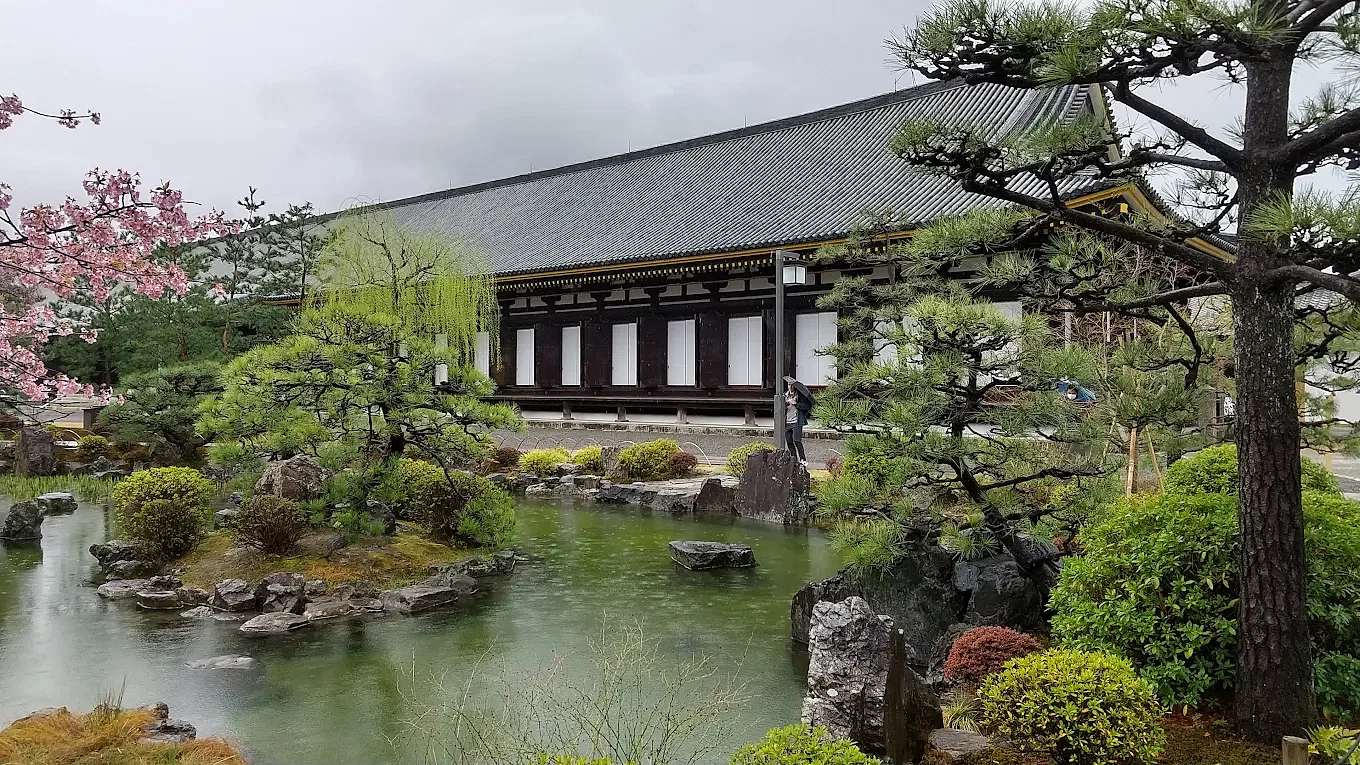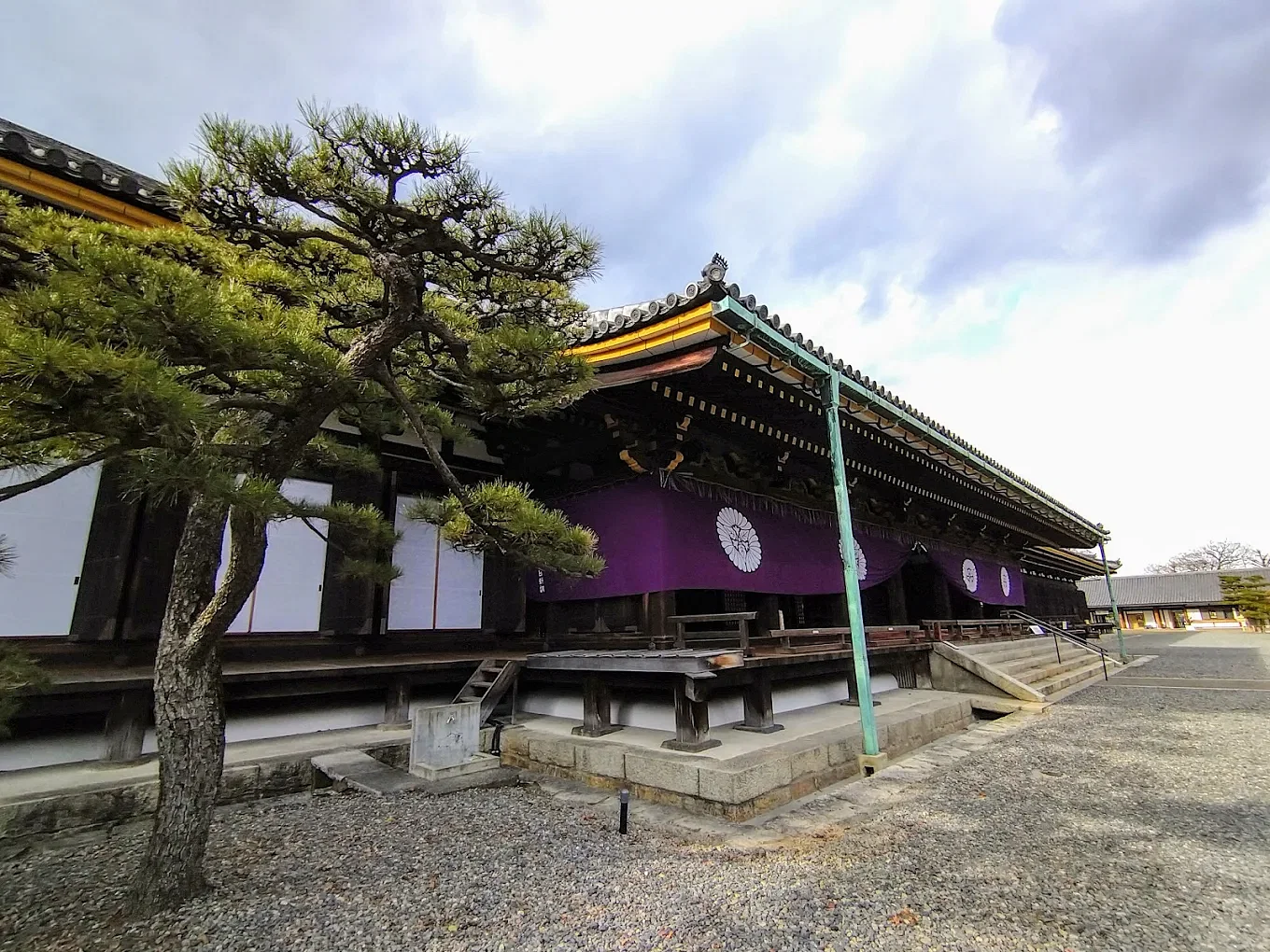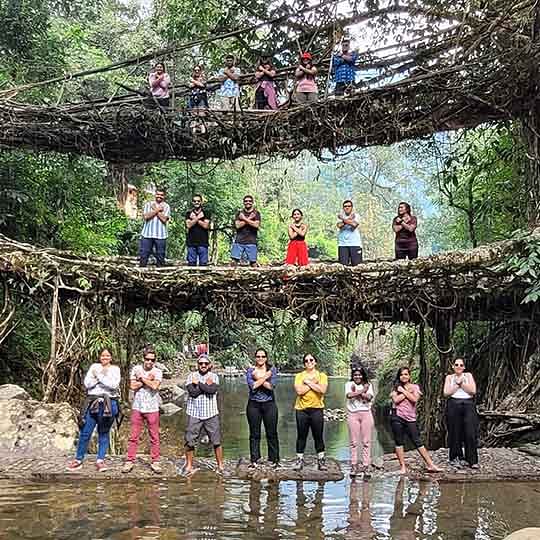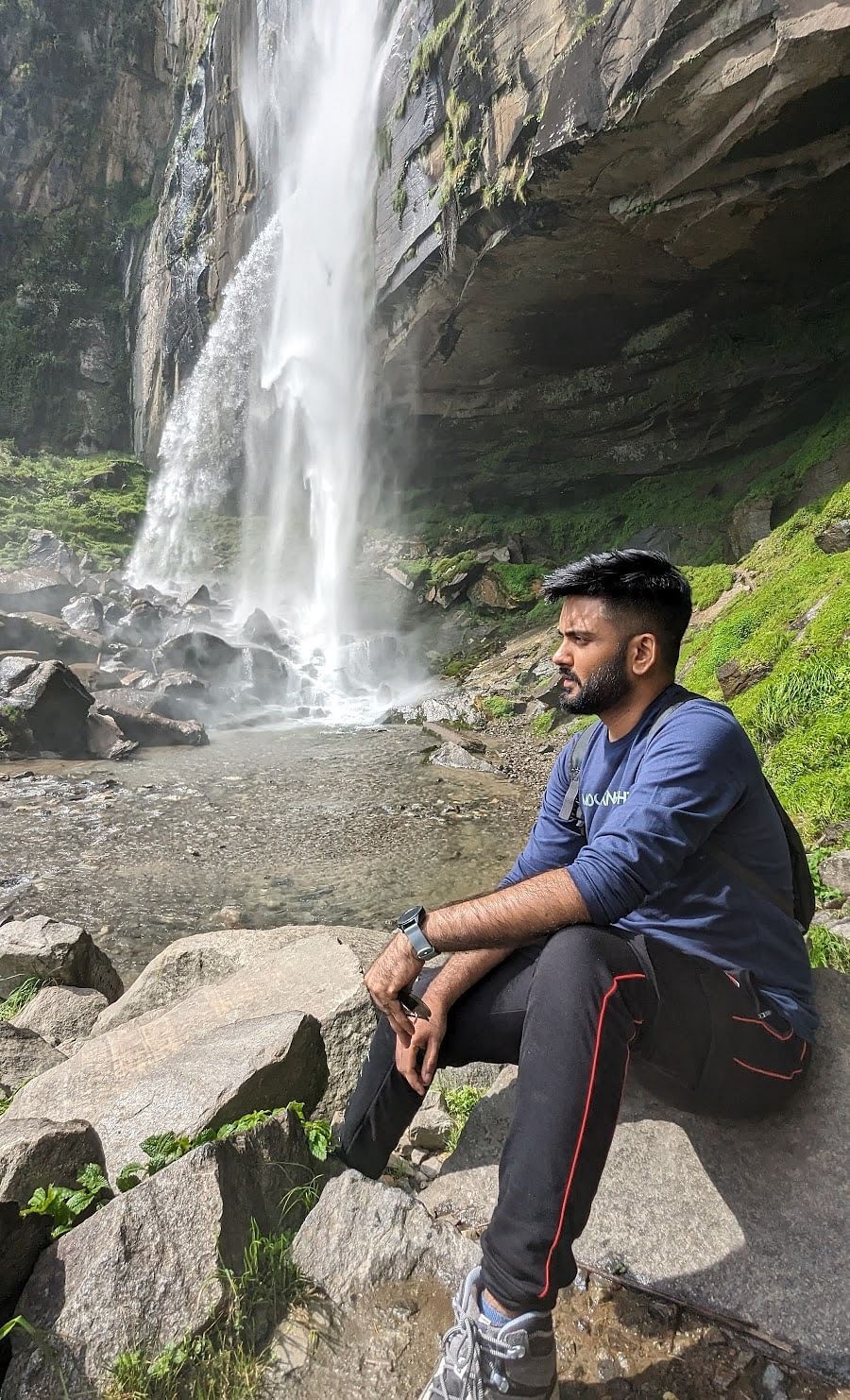You wouldn’t believe what was hiding in the eastern part of Kyoto. Sanjūsangendō Temple, when seen from the outside, does not look impressive. But inside the hall, it is an endless sight. The best part is that it has 1,001 golden statues that will drop your jaw. Not just any statue, these are life-sized Kannon figures. This Buddhist goddess has been looking after visitors since 1266. It is the most amazing place to visit in Japan.Put this near the top of your list of places to visit in Kyoto. The main hall is literally longer than two football fields, and you can see those serious-looking guardian statues. They’re not even just looking mean but are personified by different individuals who are posed to leap out from their pedestals.
Looking for unique Things to do in Kyoto? Come here on a winter morning when the sun peeks through the windows and lights up all that gold. Pure magic. It’s a place you must put on your list when booking our Japan Tour Packages. Trust us, there’s nothing quite like it anywhere else in Japan.
History and Significance of Sanjūsangendō Temple Kyoto
Sanjūsangendō Temple, constructed in 1164, was originally a project commissioned by Taira no Kiyomori, an influential military man during the Heian Period. However, its original structure succumbed to the fire, Thus, the second structure of Sanjūsangen dō Kyoto was created by Emperor Go-Saga in the year 1266. It is so-called because it signifies “Hall with 33 Spaces Between Columns”.This Buddhist temple in Kyoto is famous for having 1,001 statues of Kannon, the Goddess of Mercy. Each statue is made from Japanese cypress and exudes individuality, making this temple a marvel of Buddhist art. Its long wooden hall stretches over 120 meters, the longest of its kind in Japan, and testifies to ancient Japanese craftsmanship.
Suggested Read: Hotels in Kyoto
How to reach Sanjūsangendō Temple
Sanjūsangendō Temple, a renowned Buddhist temple in Kyoto, is easily accessible via various modes of transportation.By Bus: From Kyoto Station, you can take City Bus numbers 100, 206, or 208. The ride lasts about 10 minutes and costs 230 yen. Get down at the “Hakubutsukan-Sanjusangendo-mae” bus stop, which is adjacent to the temple. You must also visit Nanzen-Ji Temple located nearby.
By Train: Alternatively, take the Keihan Main Line to Shichijo Station. From there, it’s a five-minute walk east to the temple.
On Foot: For those who enjoy walking, Sanjūsangen dō Kyoto is approximately a 20-minute walk from Kyoto Station. This route allows you to experience the city’s atmosphere up close.
By Taxi: Taxis are readily available throughout Kyoto. A taxi ride from Kyoto Station to the temple typically takes around 10 minutes, depending on traffic.
Parking: If you’re driving, the temple offers free parking facilities accommodating up to 50 cars and 30 buses.
Address: 657 Sanjusangendomawari, Higashiyama-ku, Kyoto 605-0941, Japan.
Before your visit, it’s advisable to check the temple’s official website or contact them directly for any updates on access routes or transportation options.
Suggested Read: Cafes in Kyoto
Sanjūsangendō Temple and Zen Traditions
Although Sanjūsangendō Temple belongs to the Tendai sect of Buddhism, its connection with Zen traditions cannot be denied. Kyoto is commonly known as Japan’s spiritual heart; there are plenty of Zen temples around, and its principles resonate with Sanjūsangen dō Kyoto. The peace that can be sensed, the less elaborate architecture, and the meditative feelings that one obtains while walking inside the temple mirror Zen ideals perfectly.- The Concept of Mindfulness in Sanjūsangendō
Mindfulness is all about being here and now at every moment in life. That is exactly the feeling one has when entering the Sanjūsangendō Temple—the 1,001 statues of Kannon, the Goddess of Mercy, exquisitely arranged in a perfectly symmetrical order. As a whole, the scale and craftsmanship of every statue create this atmosphere of taking time to absorb and think—to reflect—on things, a perfect aspect of the Zen traditions.
- Meditation and Zen Practices
While meditation sessions are not formally held in Sanjūsangen dō Kyoto, the environment is naturally suited for meditation. People visiting the temple cannot help but be quietly reflective as they walk through the place. In that sense, it is an informal Zen mindfulness practice space where people find their inner selves in a calm and sacred ambiance.
Suggested Read: Mount Fuji, Japan
What Makes Sanjūsangendō Temple Unique?
The most striking feature of Sanjūsangendō Temple is its main hall. Here, 1,001 Kannon statues can be found; in the middle, a central seated Kannon is surrounded by 500 standing statues on either side. It is an incredible collection that will make one believe in the presence of the divine.Other than the statues, the Tōshiya Archery Contest is well-known which takes place each year in January, bringing across Japan skilled archers to check their precision and endurance. Combining religious, artistic, and cultural significance makes Sanjusangendo Temple Kyoto one of the most visited attractions in the city. You might also like to go shopping in Kyoto after this temple visit.
Sanjusangendo temple opening hours
For those planning a visit, it’s crucial to know the Sanjusangendo Temple opening hours. Sanjūsangendō Temple is open year-round. From April 1 to November 15, the hours are 8:30 AM to 5:00 PM, and from November 16 to March 31, the hours are 9:00 AM to 4:00 PM. Admission ends 30 minutes before closing time. These hours may vary during special events or holidays, so it’s a good idea to check in advance. When you reach, you’ll notice how easily accessible the temple is. Located in Higashiyama, it’s close to other major attractions. Many Kyoto temple guides recommend combining a visit to Sanjūsangendō Temple with other nearby sites like Kiyomizu-Dera and Tofuku-ji, both of which are prominent Zen temples in Kyoto. You must explore Nijo Castle situated within walking distance.
Practical Tips for Visitors of Sanjusangendo Temple Kyoto
1. Respect the Rules: Photography is not allowed inside the hall to preserve its sanctity. 2. Arrive Early: Visiting early in the morning allows you to experience the temple in peace.
3. Explore Nearby Attractions: Use a Kyoto temple guide to plan your day efficiently.
4. Time Needed: Allocate 1–2 hours to explore fully.
5. Admission Fee: Approx. 300 INR (cash preferred)
6. Events: January’s Tōshiya Archery Contest is a must-see if visiting during that time.
7. Stop at a restaurant – There are many small restaurants in Kyoto
Suggested Read: Nishiki Market, Kyoto
Other Notable Attractions and Zen Temples in Kyoto
Kyoto is full of beautiful places to visit. After seeing Sanjūsangen dō Kyoto, you can explore these nearby attractions: 1. Kiyomizu-dera Temple: Kiyomizu-dera temple has a large wooden stage with great views of the city. Don’t miss the Otowa Waterfall, where you can drink from three streams that are said to bring luck in love, health, and success.
Distance: 10 minutes by bus or a 20-minute walk.
2. Tofuku-ji Temple: Known for its beautiful gardens and amazing autumn colors, Tofuku-ji is a peaceful Zen temple in Kyoto. The Tsutenkyo Bridge is especially beautiful in the fall.
Distance: 15 minutes by bus or a 10-minute train ride.
3. Kyoto National Museum: This museum has lots of Japanese art, including paintings, pottery, and sculptures. It’s a great place to learn more about Kyoto’s history and culture.
Distance: Right across from Sanjūsangen dō Kyoto.
4. Higashiyama District: This old area has narrow streets with traditional wooden houses, shops, and tea houses. It’s a nice place to experience the historic charm of Kyoto.
Distance: 15–20 minutes walking.
5. Fushimi Inari Taisha: Fushimi Inari Taisha, Famous for its many red gates, this shrine is one of Kyoto’s most popular spots. You can hike up Mount Inari for great views of the city.
Distance: 10 minutes by train from Shichijo Station.
6. Rokuharamitsu-ji Temple: This quiet temple is a peaceful place to visit if you want a calm and less crowded experience.
Distance: 15 minutes walking.
7. Chishaku-in Temple: A calm temple with beautifully painted doors and a lovely garden. It’s a perfect spot to relax for a little while.
Distance: 5 minutes walking.
8. Shosei-en Garden: A hidden gem near Kyoto Station, this garden is peaceful and filled with ponds, bridges, and flowers, making it a nice place to take a walk.
Distance: 15 minutes walking.
By visiting these places after Sanjūsangendō Temple, you can see more of what makes Kyoto special.
Suggested Read: Ryoan-ji Temple
Why Visit Sanjūsangendō Temple?
Sanjūsangendō Temple is not only a place of worship but also an experience of the cultural and spiritual history of Japan. Whether viewing the golden color of the statues of Kannon or admiring the wooden construction of the temple, the memory is unforgettable.If you’re using a Kyoto temple guide, you’ll likely find Sanjusangendo Temple Kyoto at the top of the list. Its historical significance, spiritual atmosphere, and artistic brilliance make it a standout destination among Kyoto’s many Zen temples and Buddhist temples.
Plan your visit around the Sanjusangendo temple opening hours for the most out of time in this iconic temple. A visit here is not only going on a sightseeing tour; it is rather a soulful encounter with Japan’s rich heritage.




